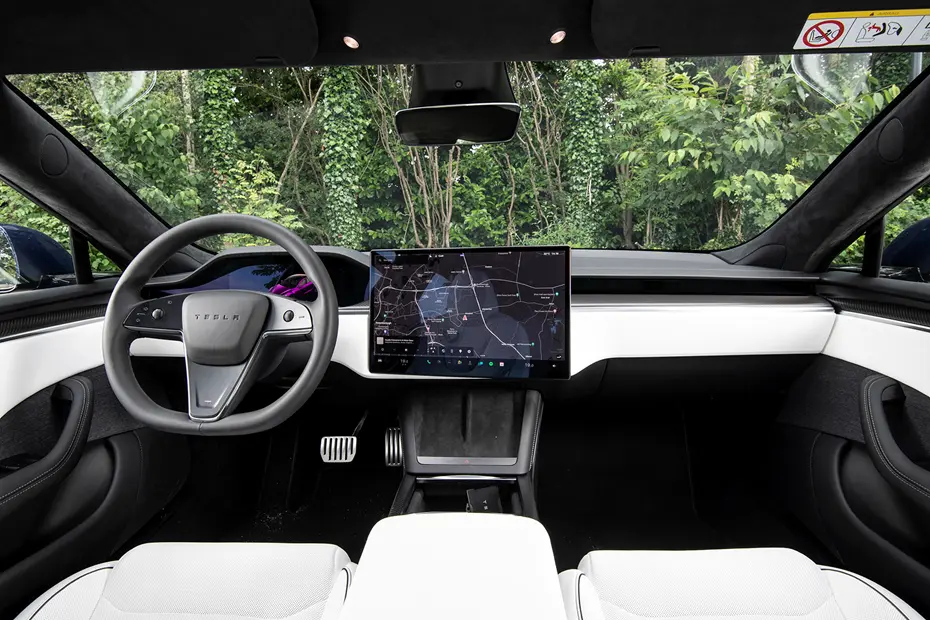The realm of electric vehicles (EVs) is buzzing with innovation, and Tesla’s relentless pursuit of technological advancement is at the forefront. Recently, Tesla announced that its Full Self-Driving (FSD) updates have reached over 400,000 beta testers worldwide, a leap that promises to reshape how we perceive EV mobility. As Tesla continues to refine its autonomous driving capabilities, the impact on the EV industry and consumer habits is profound. In this article, we’ll explore how Tesla’s Full Self-Driving updates are not only redefining EV mobility but also setting a new benchmark for the automotive future.
The Evolution of Tesla’s Full Self-Driving Technology
A Brief History of Tesla’s Autopilot and FSD
Tesla’s journey into autonomous driving began with the introduction of Autopilot in 2014. Initially designed to assist drivers with lane keeping and adaptive cruise control, Autopilot paved the way for Tesla’s more ambitious Full Self-Driving (FSD) suite. Fast forward to 2023, and Tesla’s FSD updates have transformed from simple driver assistance features into a sophisticated system capable of navigating complex urban environments.
Key Milestones in FSD Development
- 2016: Tesla announced that all its vehicles would come equipped with the necessary hardware for full autonomy.
- 2019: The first iteration of the FSD beta was released to a select group of testers.
- 2023: Over 400,000 beta testers worldwide are now contributing to the refinement of Tesla’s FSD capabilities.
The Technical Backbone: Neural Networks and Over-the-Air Updates
Tesla’s FSD relies heavily on advanced neural networks and continuous over-the-air updates. The company employs a fleet learning approach, where data from millions of Tesla vehicles is aggregated and analyzed to improve the AI’s decision-making processes. This constant feedback loop allows Tesla to deploy regular updates, enhancing both safety and functionality.
Transformative Impacts on EV Mobility
Enhancing Safety and Reducing Traffic Incidents
One of the most significant promises of Tesla’s Full Self-Driving technology is its potential to enhance road safety. With features like automatic emergency braking, collision warning, and lane-keeping assist, Tesla aims to drastically reduce traffic incidents. According to a report by the National Highway Traffic Safety Administration (NHTSA), vehicles equipped with advanced driver-assistance systems (ADAS) experience 40% fewer accidents. As FSD technology matures, these numbers are expected to improve further.
Revolutionizing Urban Transportation
Tesla’s FSD updates are not just about individual cars; they have broader implications for urban transport. Imagine a world where autonomous Tesla vehicles operate as robo-taxis, offering a seamless, on-demand transportation service. This could significantly reduce the need for personal car ownership, alleviating urban congestion and reducing emissions.
Key Benefits for Urban Areas
- Reduced Traffic Congestion: Autonomous vehicles can optimize routes and reduce idle time.
- Lower Emissions: Tesla’s electric robo-taxis would contribute to cleaner city air.
- Increased Accessibility: Provides mobility solutions for non-drivers and those with disabilities.
Economic and Environmental Implications
The widespread adoption of Tesla’s FSD technology could have profound economic and environmental implications. By reducing the need for multiple vehicles per household, families can save on car expenses, insurance, and maintenance costs. Furthermore, electric vehicles, combined with autonomous driving, could reduce fossil fuel dependency and decrease greenhouse gas emissions, contributing to a more sustainable future.
Practical Guide to Embracing Tesla’s FSD
How to Access FSD Updates
Tesla owners keen on experiencing Full Self-Driving capabilities can subscribe to the FSD package through Tesla’s app or website. The subscription model offers flexibility, allowing users to opt in and out based on their needs and preferences.
Where to Buy and Compare
For those considering a Tesla equipped with FSD, it’s essential to compare models and features. Tesla’s official website provides detailed comparisons between the Model S, Model 3, Model X, and Model Y. Additionally, Tesla showrooms offer test drives, allowing potential buyers to experience the technology firsthand.
What to Expect in the Future
As Tesla continues to innovate, expect further enhancements in FSD capabilities. Upcoming updates may include more sophisticated navigation algorithms, enhanced traffic light recognition, and even full Level 5 autonomy, where no human intervention is required.
Conclusion: The Road Ahead for Tesla and EV Mobility
Tesla’s Full Self-Driving updates are not just a technological marvel but a catalyst for change in the EV industry. By enhancing safety, revolutionizing urban transport, and offering economic and environmental benefits, Tesla is setting the stage for a future where autonomous electric vehicles are the norm. As we stand on the brink of this automotive revolution, the question remains: Are we ready to embrace a world driven by AI and innovation? Keep an eye on Tesla, as its journey promises to be a thrilling ride toward a sustainable, autonomous future.
In the coming years, as these technologies mature and regulatory landscapes adapt, Tesla’s Full Self-Driving updates will likely play a pivotal role in shaping the future of mobility. The road ahead is paved with possibilities, and the destination is a cleaner, safer, and more efficient world. Join the conversation: What are your thoughts on the impact of autonomous vehicles on our daily lives?

